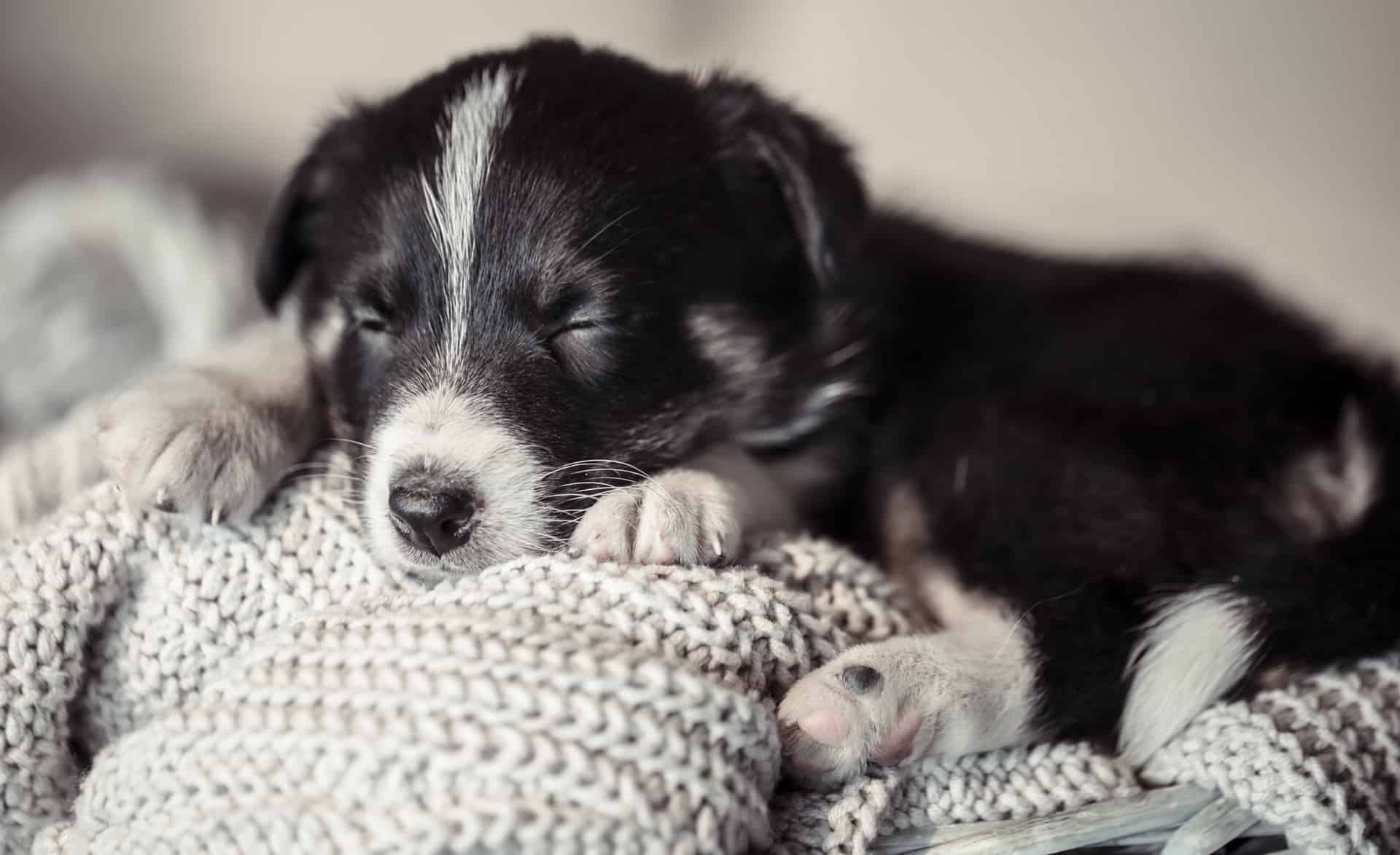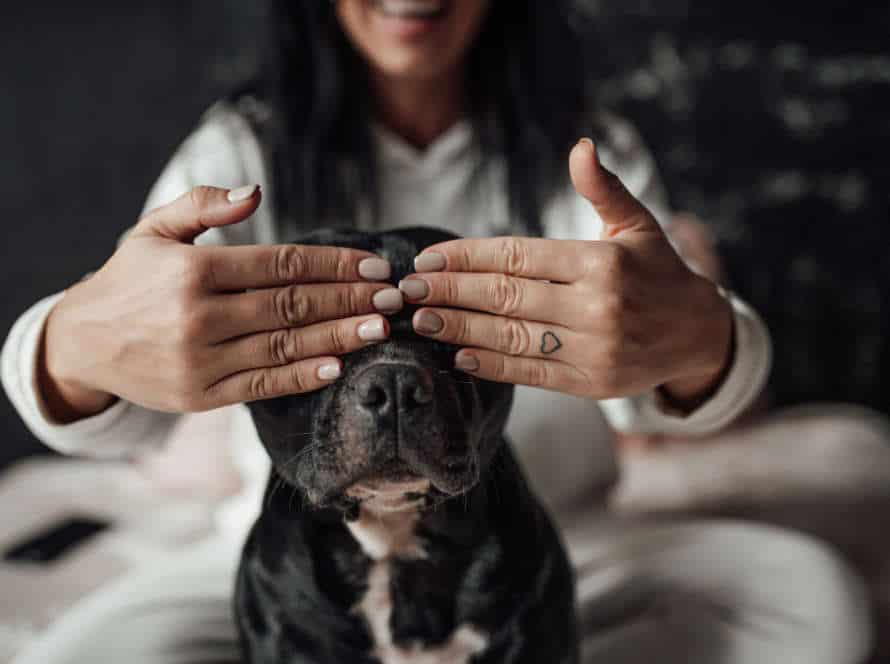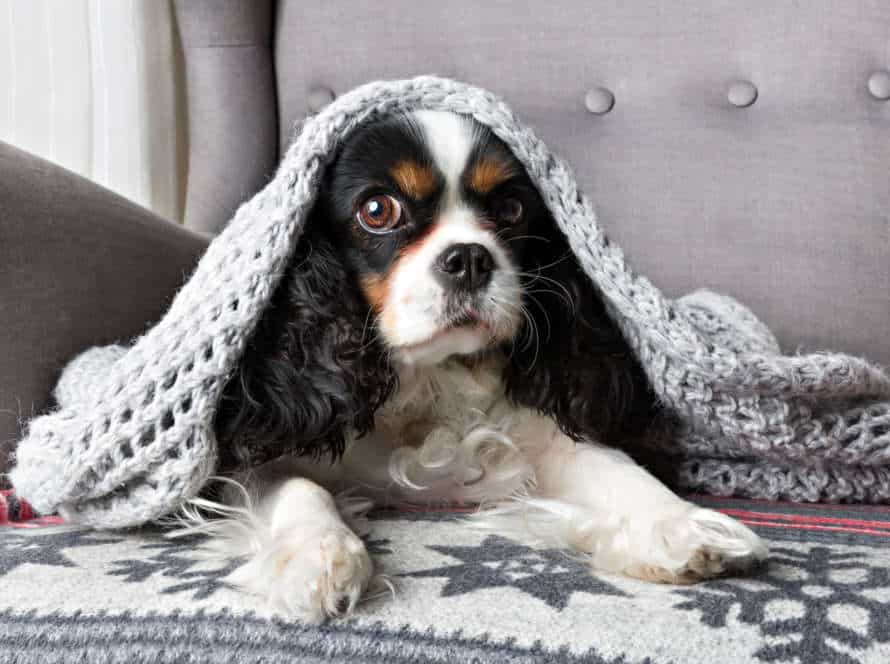Creating a Safe Environment for Your Shy Puppy
Creating a secure environment for your timid pup requires some thought.
-
First, make home a relaxed, pleasant place. Give your pup a cozy bed, some playthings and an area to eat & drink.
-
Second, form a routine. This’ll help them feel more secure.
-
Third, give your pup time and space to get used to the new surroundings. Don’t overwhelm them with too many new things or people.
-
Fourth, be tolerant and consistent with your pup. Reward them with treats and appreciation for desirable behavior. Avoid punishing or scolding them, which could make them more scared.
Remember, each puppy is distinctive and it may take a while to find what works best for them. Pro tip: If you’re having difficulty setting up a safe atmosphere for your timid pup, seek advice from a certified pet trainer or behaviorist.
Understanding Your Shy Puppy
Having a shy pup? It can be a difficulty. Comprehending their wishes is the secret to providing a cozy and secure place for them. Knowing their timid puppy behaviour and how to act is crucial for helping them be assured and make a good connection with you. In this article, we’ll examine the distinct elements of a shy puppy’s behaviour and how to develop an environment that meets their needs.
Signs of a Shy Puppy
It’s a must to know the indications of a shy pup. This’ll help make a secure and caring atmosphere for your cuddly pal. Some typical signs of a timid pup include:
- Ears flattened, tail tucked, or crouched body posture when interacting with people or other doggos.
- Evasion or hiding when someone comes close or touches them.
- Excessive panting, drooling, or shaking in social situations.
- No enthusiasm in playing or discovering new areas.
To form a secure environment for your shy puppy, it’s essential to:
- Be patient and don’t push your pup into new situations or interactions.
- Have a consistent daily routine with lots of rest, activity, and chances for socializing.
- Make a comfy and cozy living space with familiar toys and bedding.
- Give positive reinforcement for acceptable behavior and progress made towards conquering timidity.
Pro tip: Seek advice from a professional dog trainer or behaviorist if your shy puppy’s behavior persists or gets worse.
Causes of Puppy Shyness
Puppy shyness can be caused by various factors. Fear, lack of socialization or even genetics can be a source. It’s important to figure out the root cause in order to help them.
- Fear: Bad experiences with humans or animals can lead to fear and shyness.
- Lack of socialization: If a pup hasn’t encountered new people, animals and places between 3-14 weeks, they may become timid.
- Genetics: Some breeds are shyer due to their genes. Guarding or hunting breeds may show this trait.
Create a secure space for them to feel safe. Gradually introduce them to new experiences, people and animals. Positive reinforcement and treats can help encourage good behaviour. If needed, seek help from a professional trainer or behaviourist.
Remember to be patient and stay calm. Punishment or scolding could make the shyness worse.
How to Avoid Making Matters Worse
Having a shy pup can be tricky. But getting to know their behavior and making a safe space for them can make all the difference. Here are some tips to make sure you don’t make things worse when you’re with a shy pup:
- Don’t push them to socialize. Let them take it slow and approach new things and people when they’re ready.
- Stay patient and relaxed around the pup. They’ll sense your energy and react accordingly.
- Make a secure, quiet spot for the pup to go to when they feel too much.
- Reward them for brave behavior like coming close to someone or something new.
- Maybe think about joining a socialization class with a professional trainer. It can help them get used to new situations and be around other dogs.
Remember – every pup is unique and may need different ways to beat their shyness. Be kind and pay attention to their needs. Make a positive environment for them.
Training for a Shy Puppy
Training your bashful pup should be done in a secure atmosphere. Ensure your puppy isn’t feeling too much pressure or scared. Introduce one person at a time. Start with positive experiences with people, like treats and toys. This way, you can create a positive connection between pup and people. Doing this sets them up for successful social interactions for life.
Basic Training Tips for a Shy Puppy
Training a shy pup needs a secure and peaceful environment. This encourages positive reinforcement and slowly gives them new encounters. Here are some tips:
- Make it comfy – Let your pup explore its surroundings on their own terms. Provide them with a cozy and safe area when they feel overwhelmed.
- Do socialization – Slowly introduce your pup to new people. Praise and treats will make positive experiences.
- Positive reinforcements – Reward your pup with praise and treats when they show confident behavior.
- Basic commands – Start with simple commands such as sit, stay, and come. Increase the length and complexity of the commands as time passes.
- No punishment – Don’t punish your pup for mistakes or timid behavior as it will just amplify their anxiety.
Be patient, consistent, and gentle during the training. Your shy pup will eventually become more outgoing and confident.
Positive Reinforcement
Positive reinforcement is a helpful way to train shy puppies. It means giving rewards for good behaviour, to inspire them to act that way again. Plus, making an atmosphere of safety and support to aid the puppy’s shyness.
Here’s how to use it:
- Use treats or nice words to reward if the pup behaves well, like going up to someone they don’t know or being brave in a new place.
- No punishing or being angry; this increases the puppy’s shyness.
- Make a calm environment, with a usual routine, a secure spot, and avoiding overwhelming happenings.
- Gently introduce the pup to fresh things, people, and animals. Give rewards for good behaviour and help them make positive connections.
With time, patience, and positive reinforcement, your puppy can learn to feel safe in any situation.
Use Only Gentle Training Techniques
Train a shy pup by setting up a secure and supportive environment. Utilize only gentle, positive reinforcement methods. Shy puppies need additional care and leniency to be at ease and certain in different circumstances. Aggressive or punishment-based training approaches can further frighten and distress them.
Here are some lukewarm training procedures to attempt:
- Positive reinforcement training: Praise or treat your timid pup for good behavior, such as stepping out of their crate or getting close to a new person or object.
- Playing and socializing: Let your pup play with safe and familiar objects and people to increase trust and assurance.
- Calming aids: Utilize calming aids like pheromone sprays or relaxation music to soothe and relax your pup in stressful scenarios.
Remember, training a shy pup takes time and tolerance. With mild techniques, you can develop a strong bond with your furry friend.
Never Punish a Shy Puppy
Training a shy pup? Don’t punish them! That could make it worse. Create a safe, comfy space instead. Here’s how:
- Spend time with them and offer treats to build trust.
- Introduce new stuff and people in low-stress situations.
- Avoid scary places and triggers like loud noises and crowds.
- Reward good behavior with positive reinforcement.
- Give them space and time to adjust.
Patience and consistency are key when training shy puppies. Don’t rush it and celebrate small successes.
Socialization Training for a Shy Puppy
Socialization training is a must for timid puppies. It helps them overcome anxieties in strange situations. Here are some tips to get started:
- Create a secure environment for your pup. Introduce them to new items and sounds gradually.
- Expose them to diverse people, other dogs, and animals. But watch out not to overwhelm them.
- Utilize positive reinforcement by rewarding them when they show calm and self-assured behaviour.
- Gradually increase the time and strength of socialization sessions. This will help your pup become more confident and vivacious.
- If your pup is extremely anxious or scared, seek professional help. They may need specialized training or therapy.
Use Desensitization and Counter-conditioning Techniques
If you have a shy pup, it’s crucial to make a safe atmosphere where they can be at ease. Desensitization and Counter-conditioning techniques can help you accomplish this.
Desensitization is where you gradually introduce them to the source of worry or anxiety. Start from a distance and increase exposure over time.
Counter-conditioning is changing the pup’s emotional response by linking it with something positive, like a treat or affection.
Using these two methods can help your pup overcome their shyness and enjoy new experiences. Go slow and be patient. You’ll see progress and have a more confident and joyful companion.
Use Clicker Training to Build Confidence
Clicker training can be an awesome way to give shy puppies confidence. It works by providing consistent positive reinforcement and a secure, encouraging atmosphere to learn in.
Here’s how to do it:
-
Find a peaceful and comfy spot, free from stuff that could be too intimidating for your pup.
-
Introduce the clicker and give treats each time you click it.
-
Get your pup to do a trick or behavior and click the clicker when they do it right, then give them a treat.
-
Keep repeating this, making the trick or behavior more difficult. Reinforce positive behaviors regularly.
-
As your pup gets braver, add more distractions and challenges. Click and give a reward for good behavior each time.
-
Persistent positive reinforcement and a supportive environment will help your shy puppy become strong and self-assured.
Puppy Playtime for Socialization Practice
Puppy playtime is key for socializing timid pups. It also creates a safe area and encourages them to interact with other canines. Here’s what to do:
- Make a safe and comfy spot for the pup to hang out.
- Slowly introduce the pup to other, calm and friendly dogs.
- Take them to a dog park or open space for off-leash playtime.
- Monitor interactions to ensure safety and comfort.
- Gradually extend the playtime and let the pup be around different dogs.
With persistence, this technique will help your shy pup become more confident and relaxed around other dogs.
Creating a Safe Space for Your Shy Puppy
Create a safe and secure space for your shy puppy. Make it inviting so they feel comfortable. Spend time to tailor the environment to their needs. Here are some tips to help them adjust to their new home:
- Provide a safe place for them to explore.
- Make sure the area is quiet and away from other pets or people.
- Give them plenty of time to get used to their surroundings.
- Offer them treats to reward positive behavior.
- Organize activities that motivate and encourage them.
- Keep the area free of distractions and loud noises.
A Crate as a Safe Space
For a shy pup, crafting a safe haven can give them a sense of security. A crate is a great way to do this. Here are the steps:
- Choose a crate that fits your pup.
- Line it with a comfortable blanket or bed.
- Put the crate in a peaceful area of your home.
- Add your pup’s favorite toys and treats to the crate.
- Reward your pup with treats and praise when they explore the crate.
- Never use the crate as punishment.
Your pup will start to link the crate with good experiences, which can help reduce their shyness and anxiety.
Choosing the Right Crate
Choosing the right crate for your shy pup is a must. Look at the size. It should be big enough for them to move and stand up. But, not too big that they can use one bit for the loo and the other for sleeping.
Opt for a crate made of sturdy material like metal or plastic. And, no sharp edges that could hurt your pup. It needs good venting and a secure door that locks properly.
Also, think about where you’ll put the crate. A quiet spot, away from noise and commotion. Not too far though, so they don’t feel alone.
And, remember it should be a positive place, not a punishment. So, add a comfy bed and their fave toys.
Setting Up the Crate
‘Tis essential to set up a crate for your shy pup to feel safe. Here’s how to create a cozy and content space:
- Choose a crate size apt for your puppy. It should be small enough to give them a sense of security, but large enough that they can turn and lie down comfortably.
- Line the crate with soft bedding like a blanket or towel.
- Put the crate in a quiet place, away from noise and busy areas.
- Include toys and chew bones to keep pup amused and content.
- Check that pup has access to water and can exit the crate quickly.
- Keep the crate door open so pup can explore and get used to the new environment. Gradually introduce crate training, to build confidence and make them feel at home.
Dog Bedding and Toys
Creating a safe space for your shy pup is essential. Get the right bedding and toys to ensure a peaceful, stress-free environment.
- Look for soft, comfortable bedding that provides warmth and security. Choose washable and durable materials that can handle your pup’s playfulness.
- Find toys that keep your pup calm and relaxed. Chew toys and puzzle toys are great for this. Avoid toys with small parts. They pose a choking hazard. Also, choose toys made of non-toxic materials for safety.
- Pro Tip: Supervise your pup while they play with their toys and bedding.
Proper Bedding for a Shy Puppy
Creating a secure space for your timid pup is essential for its health and growth. Having proper bedding is a major part of it.
Here are some tips for selecting the right bedding for your shy puppy:
- Soft & Comfy: Get a soft and comfortable bed that gives enough support for your pup’s developing bones and muscles. Look for beds made with high-quality stuff like memory foam, cotton, or sherpa.
- Right Size: The bed should be the ideal size for your pup to relax and stretch out comfortably. A bed that’s too tiny can cause irritation and restlessness in your timid pup.
- Easy to Clean: Pick a bed that is easy to clean and strong, as shy puppies usually have accidents. Washable and stain-resistant beds can be helpful in keeping your pup’s bed clean and smelling fresh.
- Think About Location: Put your pup’s bed in a quiet and safe place away from loud noises and crowded spots. This will help your shy puppy feel secure and relaxed in its safe space.
Pro tip: Step by step introduce your shy puppy to its new bed and secure space by placing treats, toys, and familiar items around it. This can help create positive associations and decrease anxiety.
Toys to Help Build Confidence
Toys can be great for helping build confidence in shy puppies. Here are two examples:
- Puzzle Toys: These toys are good for boosting confidence. They stimulate mental activity and allow pups to feel a sense of accomplishment.
- Chew Toys: Chew toys help shy puppies feel secure. They can also create a bond between pup and owner, creating a safe atmosphere.
It’s important to note that toys alone won’t solve confidence issues. It’s best to talk to a professional trainer to address potential issues and make a plan to help your pup feel more at ease.
Calming Products for Anxiety in Shy Puppies
Got a pup that’s shy and anxious? There are a few products that can help make a safe and calming atmosphere for them.
- ThunderShirt: A snug and adjustable shirt, giving gentle pressure to your puppy’s chest which is like swaddling a baby.
- Adaptil Diffuser: A wall plug-in that emits calming pheromones that copy the scent of a mother dog, creating a secure place for your pup.
- Lickable Treats: Licking can be calming for dogs, so try treats like peanut butter, yogurt, and canned food.
- Calming Collar: This collar emits natural pheromones which lower stress and anxiety in puppies.
Creating a comfy space for your shy pup also helps reduce tension. Pro Tip – Ask a vet or pro dog trainer for the best advice.
Natural Calming Products
Create a safe, stress-free environment for your shy pup with natural calming products! They may help them to feel more relaxed and comfy in their new home.
Some natural calming products include:
- CBD Oil – a natural hemp extract with calming and relaxing effects. It eases anxiety, minimizes inflammation, and boosts a sense of well-being in canines.
- Chamomile – a herb to make tea or add to food. Calms the nervous system, reduces anxiety in dogs.
- Lavender – an herb to make a calming spray. Eases anxiety, promotes relaxation, and lessens stress in dogs.
Try natural calming products to create a secure space for your pup and help them feel at home!
Calming Products from Your Vet
If you have a timid pup, setting up a calm space can help them feel more secure. Along with environmental changes and positive reinforcement training, calming products prescribed by your vet may also help with anxiety in dogs.
Here are some calming products your vet may recommend for your shy puppy:
- Adaptil: This diffuser releases a synthetic version of the pheromone that mother dogs make to soothe their puppies. It can help with your dog’s anxiety and create a tranquil environment. Your vet can prescribe and show you how to use it.
- Zylkene: Zylkene is a dietary supplement that has casein, a milk protein that has calming effects. It can reduce stress and anxiety in dogs without causing drowsiness or other side effects. As advised by your vet, give your puppy the recommended dosage to make your home a tranquil space for your furry friend.
Nutrition and Exercise for a Shy Puppy
Creating a safe environment for your shy pup? Nourish it! Feed it well and make sure it gets enough exercise. Nutrition brings stability and security. A well-fed pup is more confident and less anxious. Exercise gives the pup a sense of achievement and wellness. It also stops boredom and destructive behaviour. This section talks about the importance of nutrition and exercise for a shy pup.
The Right Nutritional Needs for a Shy Puppy
Shy puppies need a nutritious diet for their proper growth and development. It’s vital to provide a secure environment that encourages the right nutrition and exercise. Here’s some advice:
- Choose a top-notch dog food that meets your puppy’s dietary needs. Look for a brand that has an animal protein source as the first ingredient. Consult your vet for advice on portion sizes and feeding times.
- Give small meals throughout the day, instead of one or two large ones. This will stop digestive problems and make sure your shy puppy gets the nutrients they need.
- Make a safe space for your pup to eat, drink, and exercise. Steer clear of loud and crowded places that may cause anxiety. Give plenty of toys and activities to keep your puppy entertained and stimulated.
- Progressively introduce new foods to your puppy’s diet to stop digestive distress. Stay with a regular feeding schedule, and don’t feed your puppy human food or table scraps.
By following these tips, you can help your shy puppy form healthy eating habits and create a secure and nurturing atmosphere for their wellbeing and growth.
Finding the Right Puppy Food
Finding the right puppy food can be daunting, but it is key to guarantee your pup’s growth and progress. Here are some tips to aid you in picking the correct grub for your fur-baby:
- Seek out high-grade components. Avoid grub that has fillers and second-rate products. Pick food that has meat as the main ingredient.
- Read the label. Choose puppy grub that follows the Association of American Feed Control Officials (AAFCO) nutritional guidelines.
- Consider your pup’s breed and size. Large and small breeds have different nutritional requirements. Select food that suits your pup’s size and type.
- Speak with your vet. Your vet can give you guidance on the best kind of grub and suggested serving sizes for your pup.
Remember, your puppy’s diet is fundamental for their health and development. So take the time to find the perfect food for your fur-friend.
Treats for a Shy Puppy
Shy puppies need special treats to help them be more confident. Consider nutrition and exercise too.
Here are two treats for shy puppies:
- Calming treats: Natural ingredients like chamomile and tryptophan help soothe nerves. Check the ingredients list and talk to a vet before feeding them.
- Puzzle toys: These have hidden treats inside. Stimulate the mind, reduce boredom and build confidence with treats as rewards.
Good nutrition and exercise are essential. Create a safe environment. Socialize carefully, show love and support. Help your shy puppy become happy and self-assured.
Exercise Needs for a Shy Puppy
Shy puppies can benefit from exercise routines. These will give them physical activity and mental stimulation, but keep them feeling safe. Patience and care are needed while setting up a routine. Consider the pup’s individual needs to build a nurturing environment and make them feel more confident.
For exercise tips: start with basic activities like leash training or fetch, in a secure area. As they become comfortable, gradually increase the duration and intensity. Provide mental stimulation with toys, puzzle feeders, and training exercises.
Additionally, give them a regular feeding schedule and balanced diet. This will help their overall health and energy. With love, patience, and a bit of creativity, you can give your shy pup the environment they need to thrive.
Types of Exercise for a Shy Puppy
Got a timid pup? There are certain exercises that can help bolster their boldness and make them feel secure in their surroundings.
Socialization: Exposing them to new people, pooches, and settings can help ’em learn to be comfortable with various scenarios. Gradually introduce them and keep it under control.
Agility Training: With this exercise, you’ll teach your pup to tackle obstacles and develop coordination. It’ll help them trust you and build their self-assurance.
Treadmill Training: Going for a stroll on a treadmill is a secure and monitored way to help your shy puppy get their exercise and strengthen their endurance without the stress of a new environment.
Pro tip: Always give positive reinforcement and treats to your shy pup while exercising; it’ll make it a fun and rewarding experience.
Creating a Consistent Exercise Routine
Creating an exercise routine for your shy pup is vital for their health and happiness. Here are some tips to remember:
- Start slow. Gradually increase the duration and intensity as your pup gets used to it.
- Be consistent. Set a regular schedule and stick to it.
- Choose exercises that won’t be too stimulating, such as short walks, slow runs, and gentle play.
- Use positive reinforcement to build trust.
- And always supervise to make sure your pup is safe and comfy.
Frequently Asked Questions
1. How can I make my shy puppy feel safe in its new environment?
It’s important to create a designated space for your puppy that’s quiet and away from loud noises. Providing a blanket or bed along with a few toys will help your puppy feel comfortable while adjusting to their new surroundings.
2. Should I force my shy puppy to be social with other people or dogs?
No, do not force your puppy to interact with others. Instead, expose them to new situations gradually and provide positive reinforcement when they make progress.
3. Are there any training techniques to help my shy puppy?
Positive reinforcement training techniques such as clicker training and using treats as rewards can help your puppy gain confidence and trust in you as its owner.
4. Can I use medication to help my shy puppy?
It’s important to consult with a veterinarian before using medication for your puppy’s anxiety. Medication may be useful in some cases, but should only be used under the guidance of a professional.
5. How long will it take for my shy puppy to adjust to its new environment?
This varies by puppy, but it’s important to be patient and provide a safe environment for your puppy to adjust at its own pace. It may take weeks or even months for your puppy to feel fully comfortable.
6. How can I prevent my shy puppy from becoming aggressive?
Do not punish or yell at your puppy for being shy, as this can cause further anxiety and potentially lead to aggression. Working with a professional trainer or behaviorist can help prevent aggressive behavior and ensure a happy and healthy relationship between you and your puppy.







